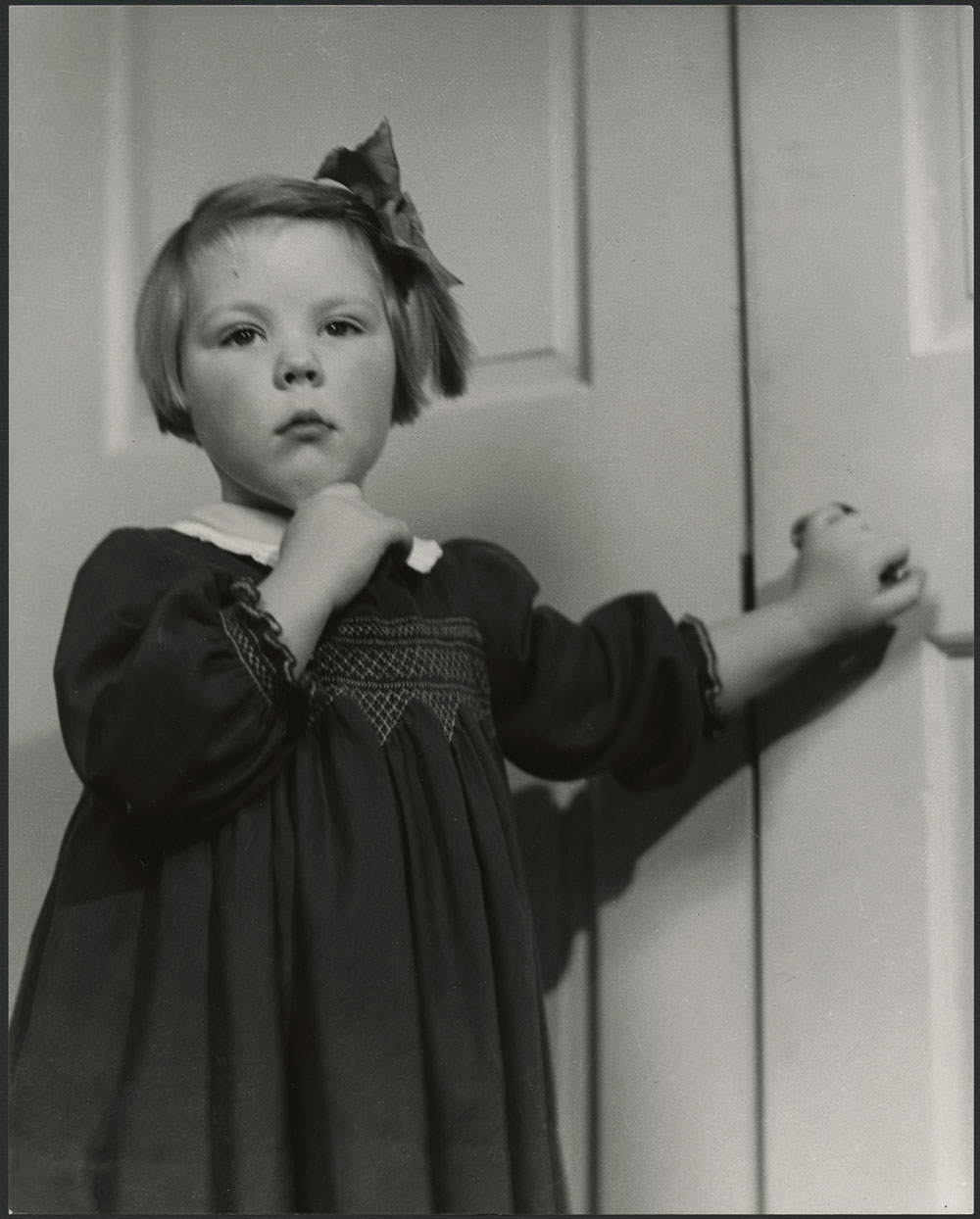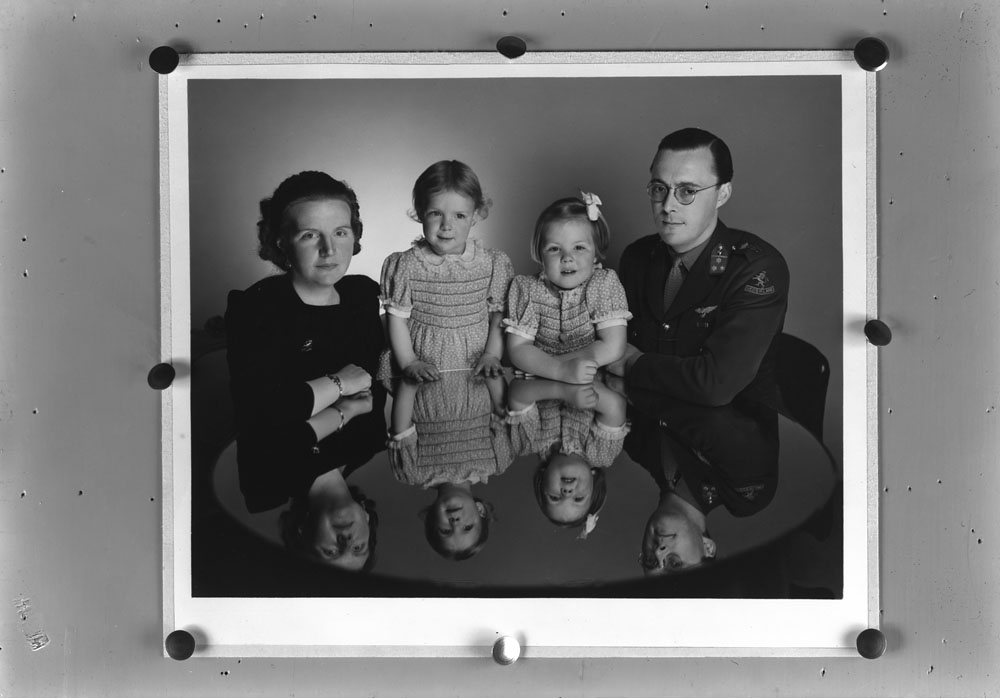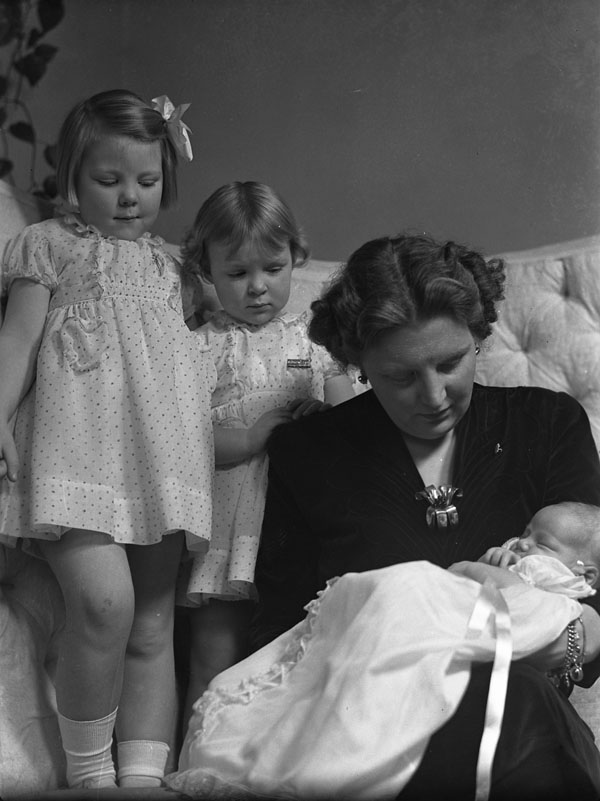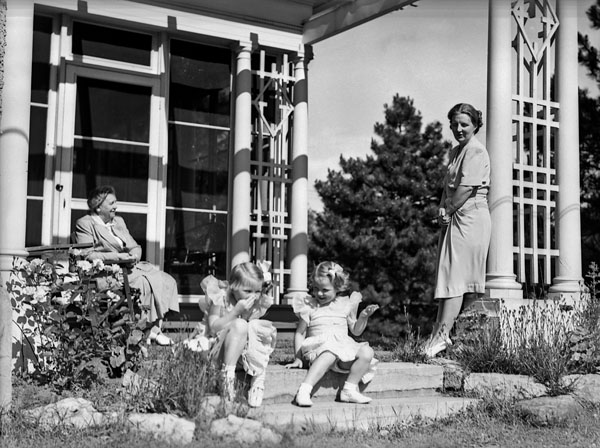Beatrix Wilhelmina Armgard, Queen of the Netherlands, 1980 to 2013 (born 31 January 1938 in Baarn, the Netherlands). Beatrix lived in Canada from 1940 to 1945 with her mother, the future Queen Juliana of the Netherlands (1909–2004), and younger sisters Princess Irene (born 1939) and Princess Margriet (born 1943). During the Second World War, the Dutch royal family was forced into exile following the Nazi occupation of the Netherlands.

Birth
Beatrix was born at Soestdijk Palace in Baarn during the reign of her grandmother Queen Wilhelmina of the Netherlands. She was the eldest of the four daughters of Crown Princess Juliana of the Netherlands and Prince Bernhard of Lippe-Biesterfeld and second in line to the Dutch throne at the time of her birth. Her godparents included her grandmother’s cousin Princess Alice, Countess of Athlone, viceregal consort of Canada from 1940 to 1946. Beatrix’s father, Bernard, provided the press with photographs he had taken of his infant daughter. His film footage of Beatrix’s first steps was released in Dutch cinemas in 1939.

Canada
The Dutch royal family fled to the United Kingdom following the Nazi invasion of the Netherlands on 10 May 1940. Queen Wilhelmina and Prince Bernhard remained with the Dutch government in exile in London. Juliana and her two children, two-and-half-year-old Princess Beatrix and nine-month-old Princess Irene, travelled to Canada for their safety during the Blitz. They arrived in Halifax aboard the Dutch naval cruiser Sumatra on 11 June 1940. They first lived at Rideau Hall with the governor general and viceregal consort, the Earl and Countess of Athlone, and then moved to 120 Lansdowne Road in Rockcliffe Park later that year before settling at Stornoway in 1941. Beatrix attended Rockcliffe Park Public School, becoming the first direct heir to the Dutch throne to attend public school. Her classmates nicknamed her “Trixie Orange” after the Dutch House of Orange-Nassau.

Juliana and her daughters (a third daughter, Princess Margriet, was born in Ottawa in 1943) spent their summers on Bigwin Island in Muskoka, where Beatrix enjoyed swimming. Her nanny, Sophia Feith, wrote to Queen Wilhelmina in 1944, “The girls are making big plans about what they’re going to do later in Holland. Trix’s ideal is to become a farmer and bring pails of milk around to all the children who have had to do without it all these years.” Copies of a group portrait of Julian and Bernhard with their daughters, Beatrix, Irene and Margriet, taken by Yousuf Karsh were dropped by Allied aircraft prior to the Canadian liberation of the Netherlands in 1945.

Return to the Netherlands
On 2 August 1945, Beatrix returned to the Netherlands with her family. The Netherlands was experiencing post-war food shortages, and seven-year-old Beatrix missed the ice cream she had enjoyed in Canada. Juliana succeeded to the throne in 1948 and sent 100,000 tulip bulbs to Canada to thank Canadians for their part in liberating the Netherlands and providing a home for her family during the Second Word War. Beatrix grew up at Soestdijk Palace in Baarn, where she was born and attended primary and secondary school. She attended Leiden University, receiving a combined degree in law and other subjects, including sociology and economics, in 1961. Beatrix made private visits to Canada in 1960, 1963 and 1964 to attend weddings and see childhood friends.
Marriage and Children
On 10 March 1966, Beatrix married German diplomat Claus von Amsberg at the Westerkerk in Amsterdam. The wedding attracted crowds of Dutch protesters, who shouted “Claus ’raus! [Claus out!]” because of the groom’s German heritage and past membership in the Hitler Youth. Beatrix and Claus had three sons: Willem-Alexander (born 1967), who succeeded his mother as monarch of the Netherlands in 2013; Johan Friso (1968–2013), who died following 18 months in a coma after being buried by an avalanche while skiing; and Constantijn (born 1969). Prince Claus died of complications from pneumonia and Parkinson’s disease in 2002.

Reign
On 30 April 1980, Beatrix succeeded to the Dutch throne following the abdication of her mother, Queen Juliana. As a constitutional monarch, Beatrix read the annual throne speech in Parliament, received foreign leaders and met with her prime minister, where “she would often be quite forthright as far as ministerial appointments were concerned.” She survived an assassination attempt in 2009. The Times journalist Peter Conradi wrote in 2012, “Beatrix…has rarely put a foot wrong in more than three decades on the throne.” In the last year of her reign, however, Dutch royal finances became a focus of scrutiny after The Telegraph reported that the Dutch monarchy had overtaken the British monarchy as the most expensive royal family in Europe.
Official Visit to Canada
From 7 to 17 May 1988, Queen Beatrix undertook an official visit to Canada, hosted by governor general Jeanne Sauvé, who held a state dinner at Rideau Hall. The Dutch were the fourth largest investors in Canada at that time, and the visit celebrated the special relationship between the two countries dating back to the Second World War. In a speech to Parliament, Queen Beatrix praised Canada’s responsible government, stating, “In Canada in 1839, Lord Durham laid the foundations for a democratic form of government in his Report on the Affairs of British North America.” Her remarks caused some controversy in Quebec, as Durham had suggested that French Canadians be assimilated. During the nine-day tour, Beatrix and her husband, Claus, visited Halifax, Quebec City, Ottawa, Toronto, Burlington, Hamilton, Calgary, Vancouver and Victoria.
Abdication
On 30 April 2013, Queen Beatrix abdicated the Dutch throne at the Royal Palace Amsterdam. She was succeeded by her eldest son, who became King Willem-Alexander. In a January 2013 radio broadcast, she stated it was time “to place the responsibility of the country in the hands of a new generation.” Queen Beatrix’s abdication received widespread media coverage in Canada because of her early childhood in Ottawa. The CBC reported, “Abdicating Dutch queen was a wartime Ottawa schoolgirl.”

 Share on Facebook
Share on Facebook Share on X
Share on X Share by Email
Share by Email Share on Google Classroom
Share on Google Classroom








